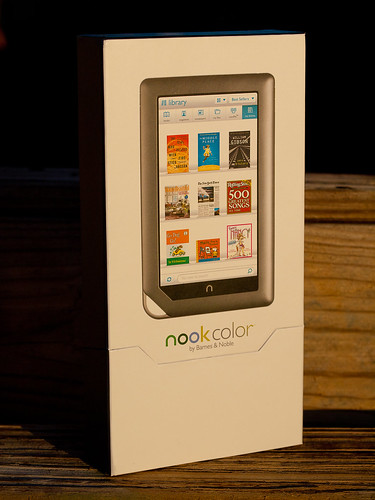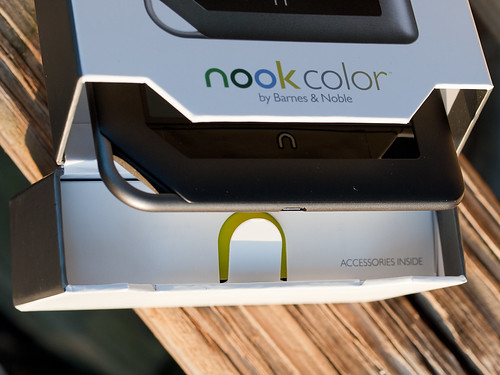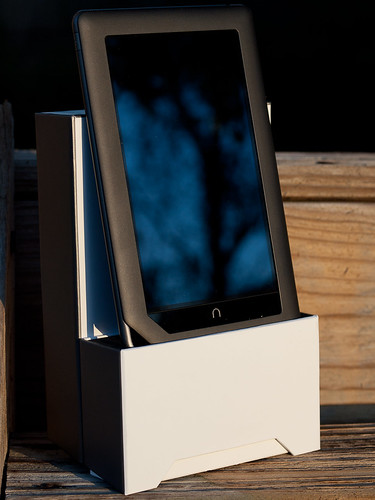Concept: 4 out of 5
Execution: 4 out of 5
Yeah, but: It's the
Chuck Norris of cameras.
The Long Version: You can tell just by looking at the
Fujifilm GX680 that it's one of those cameras that's going to kick your ass. Sure as God made green apples, it's inevitable. Ready to shoot it weighs ten pounds, and that's not counting the tripod. The lens is mounted on a front standard that can do compound swings and shifts in any direction; the additional 80mm extension rails on the front of the camera lets it focus closely enough to do near-macro work with many of its lenses. With those rails and an eye-level viewfinder, the box that would hold it snugly could comfortably fit ten D3x's, yet it can be broken down into five major components in seconds. It even has a bubble level built into the top of it. An SLR doesn't get more hard-core than that.
Garry Winogrand famously said that he takes photos to see what they look like. In the four months that I've owned my GX680, I've been compelled to see what things look like when photographed through it. It's such an extreme camera that it dictates a certain way of working, and the camera will only take the kind of photos that it likes to take. Forget about sharp close-ups of hockey players on a breakaway, or subtle street photos while rolling along in a crowd. But when I'm willing to rethink the kind of photo that I want to achieve, there's very little that I wouldn't want to use the GX680 for. Its image quality and control are addictive.
Unfortunately the 680 is such a massive camera that it needs a reason to leave the house, and it's so slow to set up that it can't be used spontaneously. The logistics of having only nine exposures on a roll of 120 film requires deliberation and planning. I'd like to say that using the Fuji takes longer to describe than to do, but it really doesn't. A 'quick' setup for one of my photos with the GX680 takes at least five minutes. Set the tripod, establish the rough composition and focus, level the camera, fine-tune the composition, relevel the camera; refine the focus, adjust the perspective controls, swing the plane of focus into place, and refine the composition, camera position, and focus once more; lock the focus knob in place. Dig out the trusty hand-held light meter, because the 680 doesn't have one built in, take a couple of exposure readings and set the shutter speed and aperture. Fold down the viewfinder, turn the camera on, and lock up the mirror; take three deep breaths and gently press the shutter switch. Flip the mirror down, turn off the camera, centre and lock the lens movements, unlock the focus knob, zero the focus, and lock the knob again before moving on. Using the camera is physically and mentally exhausting.

But in exchange for all of that, the GX680 delivers a negative five times the size of 35mm film. The classic Hasselblad medium format camera creates exceptional images with its 2
¼" square negative, but the GX680 captures 35% more surface area. And because the GX680 has a rotating back that captures a 4x3 ratio, it's a natural fit with minimal cropping for either a vertical or horizontal print. There are some excellent articles about medium format film sizes on
photo.net (where I first learned that the GX680 exists) and on Roger and Frances' excellent
Photo School website, but in a nutshell, the 6x8 nominal - 56x76mm actual - size is both one of the largest for rollfilm cameras and an excellent match for standard paper sizes. There are masks available to convert the 680 mk3 into a 6x7, 6x6, or 645 camera, but conserving film by capturing smaller negatives with the biggest SLR ever produced is missing the point.
While it doesn't boast as much perspective control as a technical large format camera, the Fuji GX680 has a good degree of their most important movements. In exchange, it gains the speed and convenience of rollfilm - everything's relative - and the ability to view and compose without having to take off the back. So while it doesn't have the sheer surface area of a large format negative, it's also true that there's always something bigger out there. The GX680III gives the automation of an SLR, including motorized film winding and advance, a last-shot warning, and fully electronic controls that can be driven from a mere six AA batteries that last a remarkably long time. As a 'system' camera, it has interchangeable film backs, and can use a waist-level finder, a 90 degree eye-level prism finder, or a metering prism that also allows aperture-priority exposure.

Whenever possible I'll use the 'waist level' finder, which is a collapsable hood with a magnifying eyepiece. The view is reversed, so moving the camera while composing can be disorienting; to shift the finder image to the right, the camera needs to swing left. I actually have used the 680 without a tripod, but framing was hopeless as I swayed around like a drunken dancer. I'll use the eye-level finder when the camera needs to be too high for me to view the top-mounted screen directly, but I'm not as confident when focusing with it. It does flip the image horizontally, so it does feel more natural to compose with it on the camera. Life's a barter.
I've never used the eye-level finder with a built-in light meter, and don't feel the need to find one. If the mirror is locked up it cuts off the light that the auto-exposure system needs, rendering its advantage moot. Since the camera is feeding an 8x8cm area with light, that's a mighty big mirror to have flying around at the moment of exposure, and I use the MLU switch whenever possible. Given the tremendous exposure latitude of good negative films, using a hand-held meter isn't all that difficult even in changing light. Since the shutter speeds are controlled in whole stops (8s to 1/400) and that the aperture only has whole click-stops, I habitually err on the side of overexposure and everything works out fine. Negative film is very forgiving.

The Fujifilm GX680iii has taught me a lot about photography. Beyond the expected lessons from working more slowly with exceptional control, I also learned that I needed a new tripod and a backpack. I've shifted the 680 from a Gitzo Explorer 2220 with a Manfrotto 410 Geared Head (above), which is wonderful but not strong enough, to a
Berlebach 3032 with a Manfrotto levelling plate (lead photo). I've often read that this beast is a 'studio camera' because it's too heavy to carry, and there's a certain truth to that even though I choose to ignore it. I finally found a backpack big enough to carry it (
Kata "Source" 261PL, reviewed), and while the bag itself is quite light, my total kit is easily thirty pounds. That includes only two lenses, the 80/5.6 and 210/5.6, the eye-level finder, two backs, and the tripod; odds and ends like a Sekonic 308 meter and film really don't add much to the total load.
Carrying the camera for a day isn't really a sensible option. A recent outing to the local Zoo involved many places to put the camera down, which made it tolerable but tiring. As the weather improves I'll be taking it for a couple of long walks, but as much as I adore the camera and love its image quality I'm resigning myself to the idea that I won't be able to travel between cities with it if there's a bus or a plane involved. It's not that I ever expected to be able to, as it's nowhere near as convenient to carry as my
rangefinder, but the GX680 is addictive in a way that I never thought it would be.
Part of the fun of having a system camera is being able to dress it up. I have three different bellows for the GX680, and all of them appear on the camera for the hero shots in this review. The lead photo shows the standard wide bellows, which gives more room for lens movements than the original. It's long enough that it can reach the end of the (optional) 40mm extension rails, but for maximum close focusing the extended bellows and 80mm rails are needed. The tradeoff is that the extra material stops wide lenses like my 80/5.6 (35-ish in 35mm) from focusing to infinity. Depending on what I'm doing I might have to change bellows as well as lenses, which is a long way from using an all-in-one superzoom on a DSLR, but in practice it isn't that big a deal. The latches are a little fiddly, but it's easier than tying a windsor knot.
The standard bellows that came with the camera are just a placeholder until one of the better ones can be put on. It works for focusing and some movement, but it doesn't do justice to the camera. It can be seen on the camera at the very bottom of this review, where the GX680 is sitting next to my D700 with its 85mm tilt/shift lens.
One accessory that I don't yet have is a cable release; I'm looking for one but not at the expense of a great deal of time or effort. While it should theoretically improve sharpness, the shutter switch (light grey, toward the bottom-front of the left side of the camera body, and visible in most of these profile photos) is activated with a very light touch that can hardly have much effect on the camera when it's securely bolted to a heavy tripod. The sensitivity and placement of the switch is why I only keep the camera powered up when I'm about to take a picture. At about a dollar a frame, hitting the shutter by accident is not funny. The main advantage that I see for a cable release is simply better ergonomics, letting me hold a more comfortable position - sitting down, if possible - while I wait for the photo to be perfect.

Photography with a small-format camera can be a lot like hunting, with the photographer moving from place to place searching for the elusive image, but using such a big camera on a tripod is more like hanging out in a deer stand. It often involves making minor adjustments in a likely spot and then waiting for the right moment. I gave a squirrel the fright of its life when I took the photo "steel in XP2" that starts this review. It was a windy day, so I needed to wait until the wind stopped moving the loose steel band that I had focused on; I stood there so long that the street-savvy tree rat had no idea that I was there. They're not too bright, but I was still impressed.
One side effect of using such a large format is that the depth of field is relatively shallow. F/8 will look like f/4 on a 'full-frame' camera, either
digital or
film, f/2.8 on a 1.5x crop digital, or f/2 on a 2x crop camera like my Olympus
E-1 or Panasonic
GH1. But aperture is an exposure control, not a focusing adjustment: a tripod would typically be needed just because of the resulting slow shutter speeds, quite regardless of its benefits for composition and support. I prefer an extensive depth of field, so given the uncertainty of swinging manual focus with less than perfect vision, I frequently work around f/22-f/32. Even in broad daylight at my typical iso320, I've never used the Fuji's maximum 1/400 shutter speed.
I have bumped into the eight second minimum shutter speed. It happened when I was working indoors and at a close focusing distance with only marginal early-morning natural light, but that situation is so carefully described that the solution suggests itself.
There is both a hotshoe and a PC terminal on the camera, making it possible to work with studio lights or speedlights. The leaf shutter means that flashes can be used with shutter speeds up to the camera's maximum 1/400 of a second, making it relatively easy to control the ambient light. The GX680iii also has a warning buzzer that can be set to sound if it doesn't think there was enough light to create an exposure, which would happen if the strobes don't fire properly. All told it is a very capable studio camera, but my skills at visualizing light keeps me working with constant light sources for now. There's also a polaroid back for doing test exposures, but that's a solution with its own set of difficulties.
The Fujifilm GX680 was made in four variations, marked with roman numerals i through iii, and iiis. The "S" variant is the same as the III but without the movements; as nice as the GX680 is, I don't see the point of saving a pound or two by removing the one really distinctive ability that it has. The i and ii variants are mostly different from the iii by running on proprietary rechargeable batteries, which is a problem as the cameras get older. The GX680III can use a combination of CR2 and CR123 lithium batteries in the back and body, which would probably last forever, but the need for those expensive cells is superseded by the 6xAA piggyback pack on the left side of the camera. Reportedly these also work on earlier models, which are much more affordable than the newer iii's on the second-hand market. These cameras have been discontinued for many years, so the likelihood of finding one as new-old-stock in a store is pretty slim, but some of the better supply houses still rent them and may sell some of their extra accessories.

The Fujifilm GX680III is my first experience with medium format film, and while it looks intimidating, both learning the new format and assembling a true system camera has been less frightening than it appears. Part of that is from my introduction to lens movements via the Nikon
85/2.8 PC-E lens, which is spanked by what the 680 can do, but the theory's the same. I also have to give thanks for
Danny Burk's excellent 680 review, which provided me with the best information about the camera, and for the whole
Photo School site by Roger (Hicks) and Frances (Schultz), which has single-handedly re-educated me after years of digital photography. Cameras with movements are nothing new, and 120 rollfilm was considered an amateur format a century ago. It's not as standardized as we're used to these days, but it's not difficult.
One significant advantage to medium format is how incredibly forgiving the huge negatives are. For detail, tonal range, and exposure latitude my D700 simply can't compete, and there's no need to go as extreme as a GX680iii to get those advantages. A basic medium format camera kit can usually be found for a few hundred dollars, and any flatbed scanner with a transparency adapter will pull out plenty of detail for the largest inkjet prints that anyone's likely to make at home. For those really great images, a professional scan can enable a print that's measured in feet instead of inches. Of course the ongoing costs of film are more tangible than those of digital, but how much is a three-year-old consumer dSLR worth today? With older film cameras depreciation is essentially zero, and there's thirty or forty year's worth of them to be found second-hand. I love my GX680, and try to use it whenever I can, but there are times when its oversized personality makes it impractical despite all of its advantages. I've been thinking of the 680 as my 'first' MF camera for a while now, and soon a smaller travel camera will be joining it.

There is no perfect camera. Everything's a compromise, decisions have to be made, and priorities must be set. The beauty of the Fujifilm GX680iii is that its design decisions are massively obvious; it's a camera that's remarkably free of the fine distinctions that plague decision making. There are systems that offer some of its abilities, but nothing wraps it up in a package like this one. The Mamiya RB/RZ gets most of the way there but without offering lens movements; large format technical cameras may actually be lighter with larger negatives and more control, but they don't have the SLR's direct view and (relatively) inexpensive and abundant film.
The Fujifilm GX680 is ten pounds of pure awesomeness. Even among its closest relatives, this behemoth stands apart. Compared to the best small format film cameras, its image quality is unbeatable. Next to something like the D700+85PC-E, the flexibility of its movements puts the shift lens to shame; the digital's exposure latitude and detail are also exceeded by the film camera. As a photographic device this Fuji SLR is so extreme that it's absurd, and I wouldn't want it any other way. It's the only camera that can count to infinity - twice.
Updated, jan 2012: to mark the one-year anniversary of writing this awesome camera's review, I've followed up with a review of the GX680's little brother, the
GA645Zi. As the name implies, it's a 645 format camera that has absolutely nothing in common with the big GX, except that they both take 120 format film and were made by Fujifilm at roughly the same time.
Major update, june 2012: UK photographer Ken Kirkword has written a fantastic addition to the story of the Fujifilm GX680, which I've had the opportunity to
publish as a guest post here. Absolutely essential reading for anyone who's interested enough to make it all the way to the end of this review.
Ken Kirkwood on the GX680 – check it out.











































